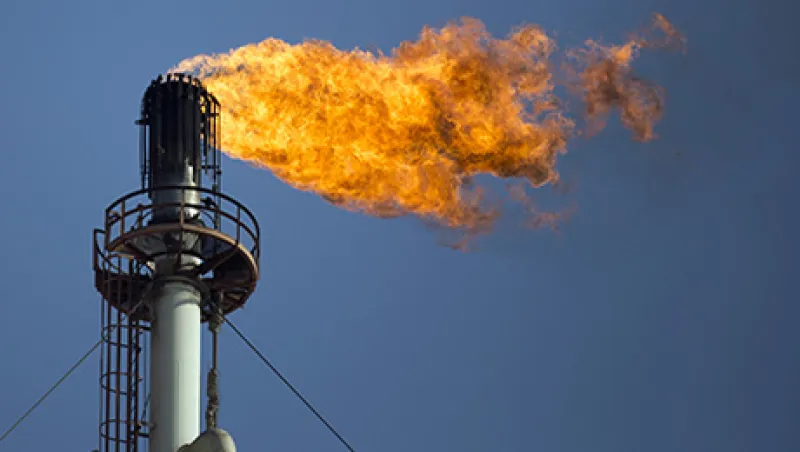Oil prices, having fallen dramatically from their June 2014 peak and given OPEC’s decision to maintain its production quota at 30 million barrels per day, should be a boon for global growth and several emerging markets. Driving greater differentiation in fundamentals — and thus promoting further dispersion in monetary policy and currency movements — the decline in oil prices presents a number of opportunities for active fund managers.
Falling oil prices are effectively a transfer of wealth from producers to consumers. This benefit is seen especially in the U.S., given its oil-intensive economy. In addition, tax makes up a small percentage of the at-the-pump cost, so U.S. end users should benefit from significant fuel cost reductions. Lower prices will also be positive for European growth, although the impact may be less pronounced owing to the region’s lower reliance on the fuel. Lower inflation trajectories should also encourage the Federal Reserve Board to keep interest rates lower for longer and finally push the European Central Bank into full-blown quantitative easing.
When weighted by population, emerging markets are net importers of energy. Therefore, the overall impact of lower oil prices on emerging markets should be lower inflation, improving external and fiscal account dynamics and higher growth.
Emerging-markets countries’ consumer price baskets tend to have a larger weighting of food and energy compared with those of developed markets. This factor increases the disinflationary effect of declining oil prices, particularly in conjunction with falling agricultural prices. The disinflationary impact will affect oil importers and exporters alike but with a greater impact on the former, largely because of positive currency dynamics. The individual country effect will depend on oil’s weight in each country’s price index, but it should help bring inflation back toward central bank targets in several countries, including India and South Africa.
For net oil importers, declining oil prices should lead to improved current-account positions. They should also prove supportive for emerging-markets expansion by increasing the disposable income of consumers. In addition, if lower oil prices boost growth in developed markets — and in China — this should have a knock-on effect on emerging-markets growth. Manufacturing export-oriented economies such as those on the Pacific Rim and in Central and Eastern Europe are most likely to benefit from this trend.
The general themes of disinflationary momentum and moderating current-account deficits, as well as perhaps more persistently accommodative monetary policy in developed markets, should also allow central banks in emerging markets to loosen monetary policy. Another important implication is for budgetary positions. A number of emerging-markets governments have fuel subsidy programs in place that are politically sacred. Lower oil prices should help create room for newly elected (and re-elected) leaders in countries such as Brazil, India and Indonesia to tackle inefficient fuel subsidies,allowing for more efficient spending in infrastructure and/or rebalancing toward more sustainable government finances. Indeed, we have already seen subsidy cuts in India, Indonesia and Malaysia. Additionally, the fall in oil prices allows governments to raise taxes.
India provides an interesting case study. First, oil comprises about a third of the country’s import bill, so the decline in prices should be positive for the country’s trade deficit. Second, persistent commodities inflation has played a significant role in driving inflation above the central bank’s target. Falling oil prices are helping to give the Reserve Bank of India room to cut rates to boost growth. We should see a loosening of monetary policy of perhaps 50 basis points in the first half of 2015. Third and finally, on the fiscal side, India spends $23 billion a year on fuel subsidies. Prime Minister Narendra Modi has axed diesel subsidies and raised overall fuel taxes in the past couple of months, which will help the government meet its 4.1 percent budget deficit target for the fiscal year ending March 31. And if oil prices remain low for longer, that should help foster India’s industrialization.
The picture for oil exporters is gloomier. There are a number of emerging markets in which oil is a crucial component of exports and government revenue. Those most exposed are Russia, Colombia, Nigeria, Venezuela and Malaysia. Many of these countries’ authorities have planned budgets and monetary policy around overly optimistic price assumptions. Lower oil prices should put pressure also on their current accounts. It is worth noting that both Colombia and Mexico have current-account deficits, whereas Russia has a small and falling surplus. Unfavorable current-account dynamics will generally be a headwind for these countries’ currencies, which in turn can force central banks to raise interest rates. We have seen this in both Russia and Nigeria.
On the fiscal side, the shortfall in government revenues from a decline in oil revenue can lead to deteriorating budgetary positions. This may force governments to raise tax revenues, squeezing disposable income and further hurting growth prospects. The deterioration in budgetary outlook in turn affects solvency. We have seen collateral debt spreads hit multiyear highs for Russia and Venezuela. Outside of government, financial defaults will become more likely. The collapse in oil prices may also lead to an uptick in political unrest, with Venezuela particularly at risk. On a more positive if somewhat speculative note, the oil bear market should support much-needed reforms in some emerging-markets countries that have become overly dependent on their energy sectors.
A case in point is Colombia, where oil accounts for about 50 percent of the country’s exports and more than 20 percent of government revenues. Therefore, there are significant risks to both the country’s fiscal and external accounts. Colombia posted strong growth in 2014, but with falling oil revenue putting pressure on the current account and government finances, economic expansion should slow this year. Oil revenue has been falling, not just because of lower prices but also because of a decline in production. To plug the revenue shortfall, Colombia has instituted tax reforms to raise an additional $24.5 billion in revenue over the next four years. The government may also tap into its $2.5 billion Oil Savings and Stability Fund to help regional budgets.
Peter Eerdmans is co-head of the emerging-markets fixed-income team at Investec Asset Management in London.
Get more on emerging markets.






